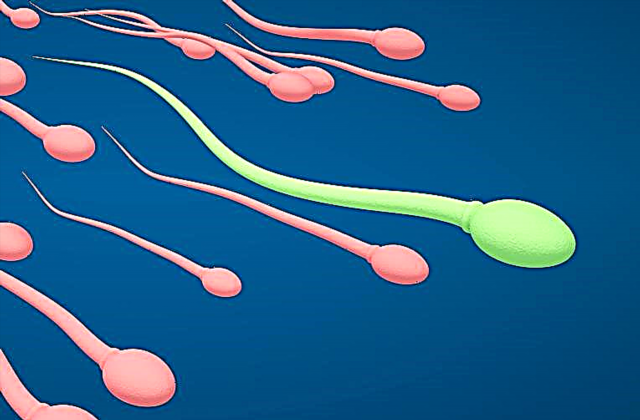Pasta is easy to prepare and goes well with a variety of dishes. They make tasty and healthy meals. Parents are interested in the age at which the child can be given pasta.

Complementary pasta
Why pasta is useful for a child
Pediatricians and nutritionists highlight the following beneficial properties of noodles:
- They are high in carbohydrates for energy.
- They contain B vitamins.
- The taste of the product is liked by most children, and this helps out parents whose babies have a poor appetite.
- In combination with pasta, the guys do not refuse many products that they do not want to eat in their pure form.
- They can be included in the menu for diarrhea.
- Due to its texture, the vermicelli stimulates chewing.
They are indispensable for replenishing energy waste due to their high carbohydrate content. When they are lacking, the body breaks down the proteins found in the muscle tissue.
Note! It is forbidden to include pasta in the menu of children suffering from delayed bowel movements and overweight. You can not give babies instant noodles, because it has no useful properties.
Composition and nutritional value
The composition of pasta includes:
- carbohydrates - 70-79%;
- proteins - 9-13%;
- fats - 1%.
The average calorie content of boiled pasta is 338 kcal per 100 g.
In addition, the product contains the following substances:
- B vitamins: B1 - improves brain function, normalizes memory and enhances bone growth, B2 - improves vision and normalizes the nervous system, B9 - regulates the metabolism of carbohydrates and fats.
- Vitamin PP promotes the synthesis of hormones and normalizes the digestive processes.
- Vitamin E prevents anemia, has a positive effect on blood clotting.
- Calcium takes part in the formation of bone tissue, teeth.
- Manganese is essential for the production of hormones.
- Iron is irreplaceable in the process of hematopoiesis.
- Magnesium normalizes digestion, promotes the formation of bone and teeth tissues.
- Phosphorus promotes kidney function. The growth and absorption of vitamins depend on it.
- Potassium is required for the well-coordinated work of the heart and soft tissues.
How to choose the right pasta
When choosing pasta, children under one year old need to pay attention to the notes on the packaging. This should contain information about the age of the child. Some manufacturers produce vermicelli with sauce.

Baby pasta
When purchasing food for children, it is recommended to opt for products made from durum wheat. Ordinary noodles are very soft. The composition of the product can be found in the packaging.
Without fear, you can purchase colored pasta for your baby. The required shade is achieved by adding natural juices to them: spinach, beets or carrots. Colored pasta can surprise your baby, which will have a positive effect on his appetite. It will be much more interesting for the child to eat curly pasta.
Attention! An infant is not allowed to give pasta made from soft wheat.
Varieties
There are such types of pasta:
- cappellini;
- spaghetti;
- vermicelli;
- lasagna;
- spirals;
- noodles;
- horns;
- penne;
- ziti;
- rigattony;
- anelli;

Anelli
- shells;
- colored pasta.
All of these products can be given to a child from the age of one. Dr. Komarovsky recommends to postpone and introduce the dish on the menu a few months later.
When pasta is introduced
Mothers need to know when to give their baby pasta. In the baby food departments, pasta is available for feeding babies up to one year old. These products are softer and smaller. It is allowed to start giving such dishes from 8 months of age. It is best to add them to soup.
Important! "Adult" products can only be fed to a child from 18 months.
How to cook pasta correctly
General recommendations for cooking pasta are as follows:
- Fill a large saucepan ¾ with water.
- When the water boils, add salt to it and lower the pasta.
- The pan does not cover during cooking.
- Stir the products. When the pasta has softened, it means it's done.
- Having thrown the finished dish into a colander and, after waiting for the water to drain, place it in a saucepan and add the oil (sauce).
Vermicelli
Vermicelli with milk is useful for a child. To prepare it, you need 2 glasses of milk, 30 g of vermicelli, half a teaspoon of butter and sugar.
Cooking steps:
- bring milk to a boil;
- pour vermicelli into it;
- cook for 10 minutes over low heat, stirring occasionally;
- add butter and sugar and cook for another 5 minutes.

Vermicelli with milk
Noodles
The method for making baby noodles is the same as for similar pasta.
Others
Other types of pasta are prepared according to the instructions. You should pay attention to whether they are suitable for children.
Norms of complementary feeding of pasta by month
It is permissible to introduce pasta into complementary foods from 8 months. From 10 months. you can add fine vermicelli to the soup. Any type of baby product should be introduced gradually. The use of flour products before the established age creates an exorbitant burden on the children's digestive tract.
As the baby grows, it can be given more "adult" meals. From the age of one, ordinary unadapted pasta will do. Then you can give colored pasta.
What can be combined with
You can make pasta tastier with these foods:
- fish;
- cheese;
- meat;
- stewed meat;
- vegetable soup cooked in a blender;
- eggs;
- vegetables.

Vermicelli with vegetables
Attention! It is allowed to give sausages to a child only after two years.
How often to give
It is recommended to give flour products to the crumbs 2-3 times a week. If after them the baby has rashes, itching, then the dish should be abandoned for a while.
Number
When a child tries pasta for the first time, only one teaspoon of the product should be given. It is best to do this in the morning so that you can follow the reaction during the day.
In case of good tolerance of pasta for children of 1 year old, it is recommended to gradually increase their number. If an allergy appears during feeding, then it is necessary to temporarily exclude the product from the diet.
When pasta is contraindicated
The use of this product is contraindicated for:
- gluten intolerance;
- overweight;
- diabetes mellitus;
- constipation.
Problems when feeding pasta
Since pasta is a high-calorie food, it may not be on the children's table every day. If you neglect this recommendation, the child may become overweight. Frequent consumption of a flour product can cause constipation.
Signs of allergies
With intolerance to wheat flour, children develop allergies. Her symptoms are:
- nausea and retching;
- diarrhea;
- the appearance of a rash on the face, scalp, tummy and limbs;
- difficulty breathing;
- runny nose.

Allergy to flour
Pasta is a tasty and healthy complementary food dish. When giving it to children, you should remember about the acceptable amount of the product. Excessive consumption of it causes metabolic problems. Knowing when to add pasta to complementary foods and how much to feed can help you avoid health problems.



